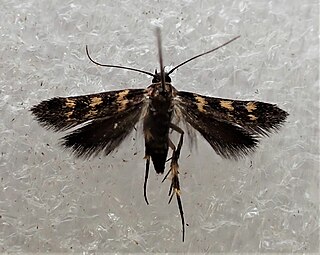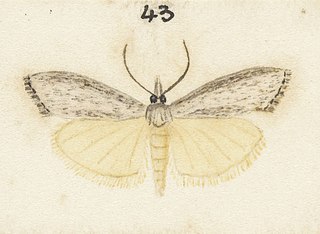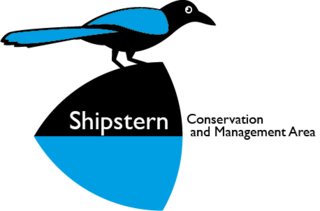
Lepidoptera or lepidopterans is an order of winged insects which includes butterflies and moths. About 180,000 species of the Lepidoptera have been described, representing 10% of the total described species of living organisms, making it the second largest insect order with 126 families and 46 superfamilies, and one of the most widespread and widely recognizable insect orders in the world.

The Cotswold Water Park is the United Kingdom's largest marl lake system, straddling the Wiltshire–Gloucestershire border, north-west of Cricklade and south of Cirencester. There are 180 lakes, spread over 42 square miles (110 km2).

Wicken Fen is a 254.5-hectare (629-acre) biological Site of Special Scientific Interest west of Wicken in Cambridgeshire. It is also a National Nature Reserve, and a Nature Conservation Review site. It is protected by international designations as a Ramsar wetland site of international importance, and part of the Fenland Special Area of Conservation under the Habitats Directive.

Periyar National Park and Wildlife Sanctuary (PNP) is a protected area located in the districts of Idukki and Pathanamthitta in Kerala, India. It is a renowned elephant and tiger reserve. The protected area encompasses 925 km2 (357 sq mi), of which 305 km2 (118 sq mi) of the main zone was declared as the Periyar National Park in 1982. The park is a repository of rare, endemic, and endangered flora and fauna and forms the major watershed of two important rivers of Kerala: the Periyar and the Pamba.

Butterfly Conservation (BC) is a UK-wide nonprofit environmentalist organization and charity dedicated to conserving butterflies, moths, and the environment. The charity uses its research to provide advice on how to conserve and restore butterfly and moth habitats and it runs projects to protect more than 100 threatened species of Lepidoptera. Butterfly Conservation is also involved in conserving hundreds of sites and reserves for butterflies and moths throughout the UK.

The wildlife of Cambodia is very diverse with at least 162 mammal species, 600 bird species, 176 reptile species, 900 freshwater fish species, 670 invertebrate species, and more than 3000 plant species. A single protected area, Keo Seima Wildlife Sanctuary, is known to support more than 950 total species, including 75 species that are listed as globally threatened on the IUCN Red List. An unknown amount of species remains to be described by science, especially the insect group of butterflies and moths, collectively known as lepidopterans.

Park Corner Heath is a 2.9-hectare (7.2-acre) biological Site of Special Scientific Interest about 1.2 miles (2 km) south of East Hoathly, adjacent to the A22 main road between Uckfield and Eastbourne in East Sussex. It is managed by Butterfly Conservation.

Pareulype berberata, the barberry carpet moth, is a moth of the family Geometridae. The species was first described by Austrian lepidopterists, Michael Denis and Ignaz Schiffermüller in 1775. The moth is found in Africa, Asia and Europe.
Sir Joseph Banks Group Conservation Park is a protected area in the Australian state of South Australia located on the Sir Joseph Banks Group in Spencer Gulf about 25 kilometres (16 mi) east-northeast of Port Lincoln. The conservation park of which specific islands had been previously declared as Flora and Fauna Reserves under statutes in force prior to 1972, was proclaimed in 1972 under the National Parks and Wildlife Act 1972. It was declared ‘primarily for the conservation of Cape Barren geese, and to protect marine mammal habitat’. As of 1996, the conservation park did not include Spilsby island which is privately owned and ‘lighthouse reserves’ on other islands while the following islands have been added post-declaration - Reevesby Island which was added in 1974 and Dangerous Reef which was added in 1989. The conservation park was subsequently extended to include the waters within 2 nautical miles (4 km) of the shoreline of all islands in the group and Dangerous Reef via a declaration under the National Parks and Wildlife Act 1972 for the purpose of regulating and managing great white shark berleying activities. The conservation park is classified as an IUCN Category Ia protected area.

Mnesarchaea fallax is a species of primitive moth in the family Mnesarchaeidae. It is endemic to New Zealand. This species is found in the Taranaki, Taupo, Nelson and Buller regions. It lives in a variety of habitats such as beech forest clearings, native podocarp forest, red tussock grasslands as well as in flax wetlands and at higher altitudes of up to 1300m. Much of the life history of this species is unknown and as at 2021 the host plants of this species have yet to be confirmed. The adult moths are on the wing from October to December. This species is classified as "Not Threatened" by the Department of Conservation.

Ruxley Gravel Pits is an 18.7-hectare (46-acre) biological Site of Special Scientific Interest in Ruxley, Orpington, in the London Borough of Bromley, and originally dug between 1929 and 1951. It is also a Site of Metropolitan Importance for Nature Conservation. It is owned by the Environment Agency and managed by Kent Wildlife Trust. Natural England has assessed its condition as "unfavourable recovering".
Catfield Fen is a wetland nature reserve near Ludham in the county of Norfolk, England. Butterfly Conservation owns and manages part of this reserve. Part of the Ant Broads & Marshes National Nature Reserve, the Butterfly Conservation part of the site comprises 59 acres (24 ha). The remainder is owned privately by the Catfield Hall Estate.

Broadcroft Quarry is an active stone quarry and part butterfly nature reserve located on the Isle of Portland, Dorset, England. It is located towards the eastern side of the island, where it lies to the east of the village Easton and close to The Grove village. The reserve section is now a valued home for a number of butterfly species, while the working quarry area is one of the largest active quarries on Portland and has supplied London with natural Portland stone for many years. The quarry is owned by Portland Stone Firms Ltd, along with Perryfield and Coombefield Quarries. The firm is the largest landholder on the island. The nature reserve is managed by Butterfly Conservation.

Meterana pictula is a moth of the family Noctuidae. It is endemic to New Zealand. This species has been classified as "At Risk, Declining" by the Department of Conservation.

Schiffermuelleria orthophanes is a moth of the family Oecophoridae. It is endemic to New Zealand. It is classified as critically endangered by the Department of Conservation.
Neptune Islands Conservation Park is a protected area occupying most of the Neptune Islands in South Australia about 55 km (34 mi) south-south east of Port Lincoln. It was established in 1967 principally to protect a New Zealand fur seal breeding colony. The conservation park was subsequently expanded to include the adjoining waters in order to control and manage berleying activities used to attract great white sharks. As of 2002, the conservation park is the only place in Australia where shark cage diving to view great white sharks is legally permitted.

Orocrambus sophronellus is a moth in the family Crambidae. This species is endemic to New Zealand. This species has been classified as Data Deficient by the Department of Conservation.

Shipstern Conservation and Management Area is a protected area located in the Corozal District of northeastern Belize.

Lincoln Pierson Brower was an American entomologist and ecologist, known for his work on monarch butterflies, chemical ecology and conservation.

The Mill Field is a 11.7-hectare (29-acre) Local Nature Reserve in Basingstoke in Hampshire. It is owned by Basingstoke and Deane Borough Council and managed by the Mill Field Conservation Group and Basingstoke and Deane Borough Council.


















